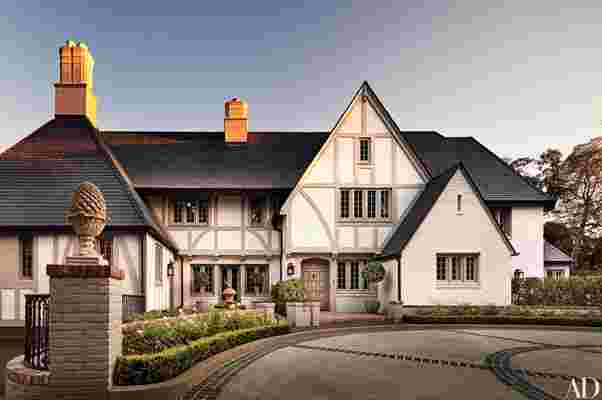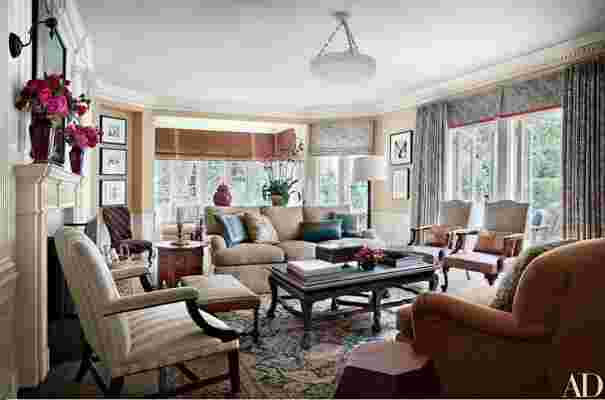This article originally appeared in the July 2012 issue of Architectural Digest.
One of the managing partners of Creative Artists Agency, arguably the world’s most powerful talent repository, Kevin Huvane steers the careers of individuals so famous—Meryl, Nicole, Oprah, and the like—they don’t need surnames. Given that star-studded portfolio and his own lifelong love of movies, it seemed destined that this unpretentious bigwig (“I’m a kid from the Bronx,” he says) would end up captivated by a house that embodies the golden age of motion pictures.
Huvane had been living in a renovated Cape Cod in Los Angeles’s Benedict Canyon when a Realtor tempted him with a grander property in Beverly Hills that suggested an intriguing past: a 1930 half-timbered mansion with steep storybook gables. “As soon as I got past the gates, I knew I was in trouble,” Huvane says with a grin, adding that the two-acre spot’s picturesque allure was amplified by a lazy drive and a tree-shaded tennis court. “It felt like a house where Hollywood people had lived.”
Indeed they had. Architect Arthur R. Kelly, a master of homes graced with “dignity, a tranquil good taste and refinement,” according to a 1922 article in The Building Review , created the structure, once known as Nine Gables, for Johnny Mack Brown, a former all-American halfback whose promising career as a leading man at MGM was cut short when his Alabama drawl proved unsuited to A-list talkies—and by the arrival of Clark Gable. (Huvane later discovered photographs of Ginger Rogers playing tennis at Nine Gables and Charlie Chaplin attending a garden party there.) Sadly, the interiors—which originally had been decorated by celebrated Massachusetts antiquarian Henry Davis Sleeper and augmented by Sleeper’s favorite architect, Halfdan M. Hanson—weren’t exactly ready for their close-up. In the ’50s Brown, by then a fixture of B-grade Westerns, and his wife sold the house to family friends, who remodeled some of the rooms in infelicitous ways. Fortuitously, when Huvane described the place to designer and friend Michael S. Smith over lunch, the latter was familiar with each and every tantalizing detail—he had once considered purchasing the Kelly charmer himself.
“We were immediately on the same page,” Huvane recalls. Smith was tapped for the decorating duties, and he brought on board Oscar Shamamian and Brian Covington, of Manhattan’s Ferguson & Shamamian Architects , to plan a sensitive renovation. “I told them I wanted the house to be comfortably elegant,” says the agent, who shares the 9,000-square-foot dwelling with his teenage son, Declan. “Not a place that feels like there should be velvet ropes.”



That being said, Smith and Shamamian faced quite a job reviving the mansion’s glory days—or, more to the point, inventing a finer architectural heritage for it. Since the previous owners’ alterations had undermined the structure’s aesthetic integrity, the team felt free to modify the floor plan and ennoble the envelope. A wall of the family room was bumped out to provide enough of a platform so the master bedroom above could have a balcony. Windows were carefully enlarged to maximize the garden views. The roofline of one gable was adjusted so the bedrooms it shelters could have more natural light. Ceilings were raised here and there to create loftier proportions and more spatially delightful configurations, such as the boldly raked tray ceiling that now crowns the master bedroom. “In many regards the house is now quite new,” Covington explains, “and everything was rearranged. The original kitchen is now a guest room, for example, while the new kitchen takes the place of an unusual sequence of small rooms that may have been used back then for changing clothes to play tennis.”
